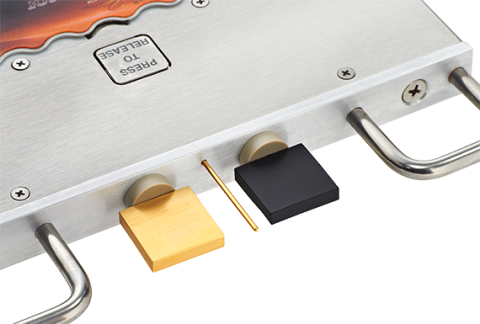Energy costs can take a big bite out of profits, especially when ovens are running all day. That’s where equipment to analyze thermal profiles within commercial bakery ovens comes in. Reading Thermal products analyze heat distribution, baking times and temperature consistency – helping bakeries reduce wasted energy, improve productivity and still maintain the highest product quality.
Whether you’re managing a large-scale commercial operation or a smaller bakery, optimizing oven performance through thermal profiling can make a huge difference in both cost savings and sustainability.
Understanding Thermal Profiling in Baking
Thermal profiling is the process of recording and analyzing the temperature inside an oven throughout the baking cycle. Using specialized sensors, such as Reading Thermal’s SCORPION® 2 Temperature Sensor Array, bakers can track how heat moves through the oven and how evenly it reaches products. This data helps identify temperature fluctuations, inefficient heat zones and even potential energy loss.
Many bakeries rely on traditional oven settings, assuming they’re always delivering consistent results. But the reality is, without thermal profiling, it’s hard to know if an oven is operating at peak efficiency. Hot spots, uneven airflow and overcompensating for temperature drops can all waste energy without bakers even realizing it.
Reducing Energy Waste Through Heat Optimization
One of the biggest ways thermal profiling improves energy efficiency is by eliminating temperature inconsistencies. If an oven is running hotter than necessary or has areas that aren’t heating evenly, bakers often compensate by increasing bake times or temperatures – both of which waste energy. By identifying and fixing these inefficiencies, bakeries can maintain ideal baking conditions without unnecessary power consumption.
Another common issue is heat loss from frequent oven door openings. If bakers need to check on products constantly, they’re letting heat escape, forcing the oven to work harder to maintain temperature. With thermal profiling systems from Reading Thermal, bakers get accurate data on when the baking cycle is complete, reducing the need for manual checks and minimizing wasted heat.
Optimizing Bake Times and Reducing Overbaking
Overbaking is another hidden energy drain. If products are left in the oven longer than necessary, not only does it impact texture and moisture levels, but it also increases energy use. Thermal profiling allows bakeries to fine-tune baking times to the exact moment when products reach the perfect doneness.
For large-scale operations, even shaving off a few minutes per baking cycle can add up to significant energy savings. By dialing in precise baking profiles, bakeries can maximize oven output while reducing overall power consumption.
Preventing Unnecessary Preheating and Heat Loss
Many bakeries preheat ovens longer than necessary to ensure they reach the right temperature. But without accurate profiling, they might be overcompensating, using extra energy that isn’t needed.
Thermal profiling helps determine the optimal preheating time, cutting down on wasted electricity or gas. It also helps identify whether residual heat can be used more efficiently. Instead of letting an oven cool down completely before the next batch, bakers can plan their schedules to take advantage of existing heat, further reducing energy consumption.
Equipment to analyze thermal profiles within commercial bakery ovens is a game changer for energy efficiency. Whether you’re looking to lower your electricity bill or reduce your environmental impact, using thermal profiling products from Reading Thermal to fine-tune oven performance is a smart and sustainable move. Use our online form or call 610-678-5890 to learn more.

